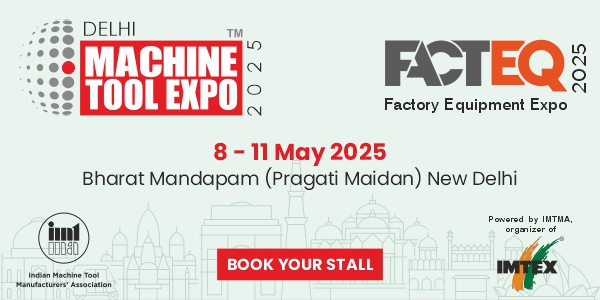India, one of the fastest-growing economies in the world, has emerged as a significant player in the global manufacturing arena. The manufacturing sector, often dubbed the backbone of economic development, has witnessed a transformative journey, evolving from traditional labor-intensive processes to a hub for advanced technologies and innovation. This article delves into the key aspects shaping India’s manufacturing landscape, highlighting its growth drivers, challenges, and future potential.
Historical Evolution of Manufacturing in India
India’s manufacturing journey began with the industrial revolution’s ripple effects during the colonial period. Post-independence, the government focused on self-reliance, establishing public sector enterprises and fostering indigenous industries. The Green Revolution in the 1960s further bolstered agro-industries. However, it was the economic liberalization in 1991 that marked a paradigm shift, opening doors to foreign investments and advanced technologies. This era ushered in a new wave of modernization, diversification, and global competitiveness.
Current Trends in the Manufacturing Sector
- Make in India Initiative: Launched in 2014, the “Make in India” campaign has been a cornerstone in transforming India into a global manufacturing hub. This initiative has incentivized domestic and foreign investments, improved ease of doing business, and boosted the development of infrastructure.
- Technological Integration: Indian manufacturers are increasingly adopting Industry 4.0 technologies, including automation, Artificial Intelligence (AI), Internet of Things (IoT), and robotics. Smart factories are becoming the norm, especially in sectors like automotive, aerospace, and electronics.
- Rise of MSMEs: Micro, Small, and Medium Enterprises (MSMEs) form the backbone of the manufacturing sector, contributing nearly 30% to GDP and 50% to exports. Their agility, coupled with digital tools, enables them to compete globally despite resource constraints.
- Sustainability and Green Manufacturing: With growing environmental concerns, Indian manufacturers are focusing on sustainable practices. Renewable energy, waste management, and energy-efficient machinery are becoming integral to operations.
- Global Supply Chain Participation: India’s strategic geographical location and large talent pool make it an attractive destination for multinational corporations. Companies are diversifying supply chains post-pandemic, with India benefiting as a preferred alternative to China.
Key Sectors Driving Growth
Automotive: India is one of the largest producers of automobiles and a hub for small and affordable cars. Companies like Tata Motors, Maruti Suzuki, and Mahindra have led innovation in this space, while foreign players like Hyundai and Toyota have made India a major export base.
Electronics and IT Hardware: The government’s focus on promoting electronics manufacturing through schemes like PLI (Production Linked Incentive) has attracted global giants like Apple and Samsung to establish manufacturing facilities in India.
Pharmaceuticals: India is known as the “Pharmacy of the World,” contributing significantly to global generic drug supplies. The robust pharmaceutical manufacturing base has proved its mettle during the COVID-19 pandemic.
Aerospace and Defense: With initiatives like Atmanirbhar Bharat, India is enhancing indigenous production of defense equipment. HAL and BEL are notable examples of public enterprises driving aerospace manufacturing.
Textiles and Apparel: A traditional stronghold, the textile industry is evolving with modern techniques and eco-friendly practices, ensuring it remains a key export sector.
Challenges in the Manufacturing Sector
Infrastructure Gaps: Despite improvements, inconsistent power supply, inadequate logistics, and limited connectivity in rural areas hinder productivity.
Skilled Workforce: While India has a large workforce, skill gaps persist. Aligning education and vocational training with industry needs remains a challenge.
Access to Finance: MSMEs often struggle with limited access to credit and high borrowing costs, stifling their growth potential.
Regulatory Hurdles: Complex compliance requirements can deter investments, particularly for smaller enterprises.
Global Competition: Indian manufacturers face stiff competition from established players like China, Vietnam, and Indonesia in cost and efficiency.
Government Interventions and Policies
The government has introduced several policies to address these challenges and bolster manufacturing:
Production Linked Incentives (PLI): This scheme rewards manufacturers for incremental production, focusing on electronics, textiles, pharmaceuticals, and automotive.
National Infrastructure Pipeline (NIP): Investments in infrastructure projects are expected to reduce logistics costs and enhance supply chain efficiency.
Digital India: Promoting digital adoption across sectors ensures that Indian manufacturers remain competitive in a tech-driven world.
Skill India Initiative: This program focuses on equipping the workforce with industry-relevant skills, bridging the skill gap.
Startup India: The promotion of startups in manufacturing, especially in high-tech areas like robotics and AI, is fostering innovation and entrepreneurship.
The Road Ahead
India’s manufacturing sector is poised for exponential growth, underpinned by favorable demographics, policy support, and a growing domestic market. The focus on sustainability, innovation, and global collaboration will define its future trajectory.
Export Potential: With a robust manufacturing base, India can expand its footprint in global markets, particularly in emerging economies.
Technology Integration: Continued investments in R&D and Industry 4.0 technologies will enable Indian manufacturers to achieve higher efficiency and precision.
Regional Development: Decentralizing manufacturing to tier-2 and tier-3 cities can create a balanced growth model, leveraging local resources and reducing urban congestion.
Enhanced Collaboration: Partnerships between academia, industry, and government can accelerate innovation and address workforce challenges.
Conclusion
India’s manufacturing landscape is at a turning point, with immense opportunities to become a global leader. While challenges remain, the country’s resilience, innovative spirit, and strategic initiatives lay a solid foundation for sustained growth. As manufacturers embrace digital transformation and sustainable practices, the sector is set to play a pivotal role in realizing India’s vision of becoming a $5 trillion economy and a global powerhouse.
The journey ahead is as much about embracing change as it is about driving innovation, ensuring that Indian manufacturing continues to rise as a beacon of excellence on the global stage.





